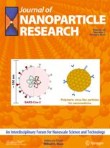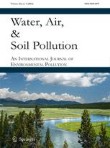
Abstract
Purpose
Temporary abdominal closure is a component of damage control surgery and may decrease mortality rates. The ultimate aim in managing an open abdomen is to achieve definitive fascial closure. The aim of this study is to assess the previously known predictors for failure to achieve definitive fascial closure and identify new predictors in order to achieve a better outcome.
Methods
An 11-year retrospective chart review included open abdomen cases at Inkosi Albert Luthuli Hospital Trauma ICU in KZN (Ethics Approval BCA207-09). The evaluated outcomes were definitive fascial closure, open abdomen and mortality. Variables included age, co-morbidities, albumin levels, renal failure, multiple blood transfusions, type of blood products given, entero-atmospheric fistulas, TAC, anastomosis, intra-abdominal abscess, type of nutrition, ACS, number of re-laparotomies, deep site infections (peritonitis), systemic infections (bloodstream), ventilator acquired pneumonia, head injury, and type of fluids given.
Results
This study reviewed 188 cases, 46.8% (88) arrived from elsewhere with an open abdomen while 53.2% (100) did not; 46.8% suffered blunt trauma, 45.2% suffered gunshots, while 8.0% were stabbed. Ninety deaths (47.9%) occurred during the index admission with 57 (30.3%) within the first 30 days. For both death within 30 days and death as final outcome, the majority were blunt abdominal trauma, 51.1 and 52.6%, respectively. Out of 188 patients, 27.1% had definitive fascial closure and 26.6% remained with an open abdomen. The relevant variables related to failure to achieve fascial closure were hypoalbuminemia (p = 0.002, p = 0.036), anastomotic leak (p < 0.05), VAP (p = 0.007), age (p = 0.002), intra-abdominal abscesses (p = 0.006), ACS (p = 0.005), multiple re-laparotomies (p = 0,028), deep surgical site infection (p < 0.05) and multi- organ failure (p = 0.003).
Conclusion
This study identified the predictors of failed fascial closure and mortality. While not directly modifiable, hypoalbuminaemia, anastomotic leak and sepsis, leading to multiple re-laparotomy, preclude early closure and portend high mortality.






